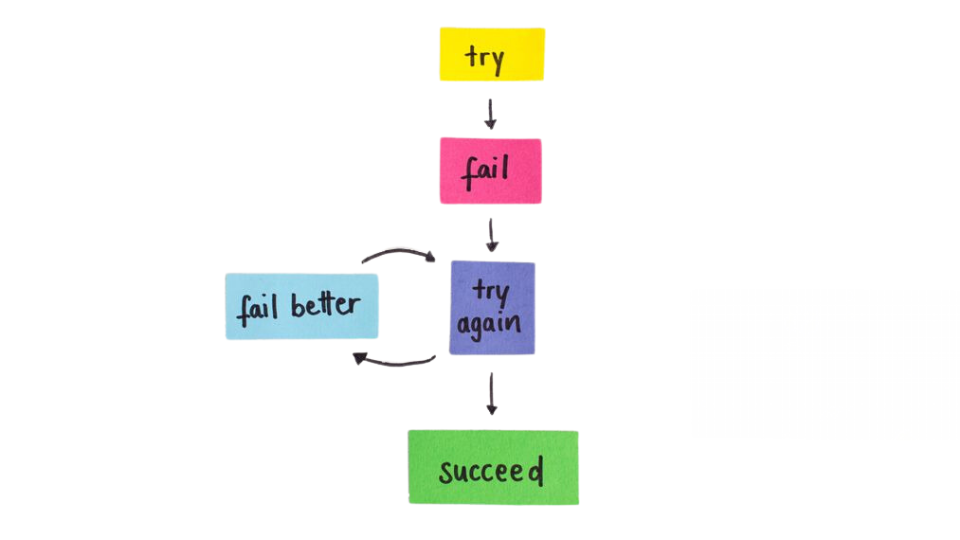Agility isn’t about team size—it’s about how you use the people you have
We often believe that the bigger a company gets, the more rigid it becomes—like adding weight to a race car and expecting it to keep the same speed. That’s the myth, but the truth is agility isn’t about headcount—it’s about how you work with the team you’ve got. COVID-19 flipped this thinking on its head.
When the pandemic hit, businesses of every size had to pivot overnight. Take the hospitality industry: hotels saw bookings plummet with travel restrictions and lockdowns. Companies like Marriott, one of the world’s largest hotel chains, had to shift their entire business model. They rapidly introduced flexible cancellation policies, prioritized new cleaning standards, and even transformed some locations into remote workspaces to cater to the needs of a changing world.
Agility made this possible. Marriott’s massive size didn’t matter—they adapted fast because they had systems in place to respond quickly. They used agility not just to survive the crisis but to stay competitive.
In a business sense, agility is simply the ability to respond to change— fast.
A team can adapt to shifts, customer needs, or unexpected challenges without getting bogged down in decision-making. This flexibility matters because, in today’s market, businesses that can’t keep up get left behind. Trends shift, customer demands evolve, and new competitors emerge, so teams that can pivot quickly don’t just survive—they thrive.
So, how can you build that kind of agility into your team, whether you’re leading five people or five hundred? Let’s dig into some fundamental strategies that work, no matter your team size.
1. Build Small, Cross-Functional Teams
The pandemic taught us that being large doesn’t mean you can’t be fast. But size alone doesn’t give you agility; structure does. One way larger companies stay nimble is by creating cross-functional mini-teams—small, independent units with the skills and authority to tackle tasks without getting bogged down.
Empower Mini-Teams to Act: Give each team the authority to make decisions quickly. For example, Marriott empowered its regional teams to act on local COVID-19 restrictions without waiting for corporate approval. This flexibility lets them keep up with constantly shifting regulations in different areas.
Own the Whole Task: Allow mini-teams to see projects from start to finish, reducing handoffs and confusion.

Pro Tip: Implement the “Two Pizza Rule” that Amazon uses: a meeting should never have more attendees than can be fed with two pizzas. The idea behind this rule is that smaller meetings are typically more productive and effective than larger ones, as each team member can express their ideas and avoid discussing irrelevant topics. It is to prevent groupthink, a phenomenon that occurs when a large group’s need for consensus overrides the judgment of individual group members. This structure empowers teams to make decisions swiftly and focus solely on their part, boosting efficiency.
2. Streamline Communication for Speed
Communication can either drive agility or kill it. The key is to keep channels simple and open. This is crucial in larger organizations where communication can quickly get bogged down in too many layers.
Limit the Approval Chain: Agility Needs a Faster Green Light. Zara is a standout example of empowering local teams for agile decision-making in response to customer demand. Unlike traditional retailers, Zara uses a rapid response model where local store managers provide real-time feedback on customer preferences directly to designers and inventory teams at headquarters. For example, if a Zara store in Milan notices an increased interest in a specific style or colour, the store manager can quickly report this, prompting designers to adjust production. This model allows Zara to bring new trends into stores within just a few weeks rather than months. This decentralized decision-making approach keeps Zara highly responsive, allowing the company to react to shifts in fashion trends with incredible speed across Europe.
Clear, Direct Channels. Big teams, especially, need to designate specific points of contact. During COVID-19, companies like Unilever ensured that regional teams had a direct line to corporate leaders so that updates were streamlined and timely. By reducing miscommunication, Unilever made quick pivots in its supply chain to respond to changing demands and restrictions.
Agility doesn’t mean you are rushing into decisions.
It means having the right people empowered to make the right decisions immediately.
3. Feedback Loops Keep You Moving Forward
In an agile team, feedback isn’t a once-a-quarter ordeal—it’s an ongoing conversation. Regular, fast feedback lets teams adapt quickly, fix issues, and keep projects on course.
Regular, Short Check-Ins. Frequent, brief check-ins help teams stay aligned and tackle issues before they grow. At Spotify, for example, agile teams (or “squads”) hold daily stand-ups to discuss progress, roadblocks, and next steps. These check-ins are short, to-the-point meetings where team members quickly share updates.
This practice allows Spotify to adjust projects on the fly, keeping squads in sync and enabling them to solve issues early. While small teams can often handle daily stand-ups, larger organizations might implement weekly or biweekly check-ins across mini-teams to maintain alignment without overloading schedules.
Act, Assess, Adjust: Agile teams thrive on a “fail fast, fix faster” approach. Companies like Zoom took this to heart, constantly tweaking their platform in response to feedback as millions of users suddenly flocked to video conferencing. They updated security settings and added new features on the fly to meet user demand, proving that agility in real-time product updates builds user trust.
Shopify has a culture of rapid testing and iteration. When they release a new feature, they don’t aim for perfection from day one. Instead, they launch, gather real-time user feedback, and then adapt quickly based on what’s working and what’s not. By acting swiftly, assessing user feedback, and adjusting without delay, Shopify continually refines its product to meet user needs better and build customer loyalty.


Pro Tip: Embracing a “fail fast, fix faster” approach can give teams a critical edge, allowing them to adapt and respond quickly to real-world feedback. Here’s how to build an effective feedback loop for immediate adjustments:
Start Small with Pilot Tests
Launch new features or updates in small segments or to a limited audience. This approach minimizes risk and lets you gather initial feedback in a controlled environment. For example, if you’re rolling out a new app feature, release it to a specific group of users first.
Why it works: You get immediate, relevant insights without a full-scale commitment, allowing for faster adjustments.
Gather Real-Time Feedback
Use tools like in-app feedback, user surveys, or quick-response channels (like Slack or Teams) where customers or team members can immediately share what’s working and what isn’t.
Why it works: Real-time data helps you stay on top of user needs, allowing your team to make tweaks while the product is still fresh.
Analyze Quickly, Not Perfectly
Don’t wait for a complete analysis before making changes. Look for patterns in the feedback that indicate clear areas for improvement and prioritize immediate fixes.
Why it works: Speed is key; immediate fixes keep momentum, letting users see that their input matters, which can increase trust and engagement.
Implement Rapid Adjustments
Once you have a good understanding of what needs fixing, deploy updates promptly. For tech teams, this might mean quick patches or minor updates, while for service teams, it might mean adjusting processes or policies in real time.
Why it works: Immediate action on feedback reinforces responsiveness and keeps users engaged while preventing minor issues from escalating.
Rinse and Repeat
Make adjustments, then re-assess. Continue this loop—act, assess, adjust—regularly. This approach keeps your team adaptable and always improving, building agility into your operations.
Why it works: A continuous feedback loop builds resilience and adaptability, which is especially valuable in fast-paced markets where customer needs evolve rapidly.
Building the feedback loop into your processes creates a culture where agility isn’t just a goal; it’s a standard practice. Your team is always ready to respond to change, keeping your product relevant and your users happy.
Whether your team is big or small, agility is within reach. It’s not about shrinking your team to be faster; it’s about giving your people the tools, authority, and support to act quickly. The fast adapting companies are market leaders not because of their size, but because they have implemented these elements into their daily routines and their culture, regardless of their size.
Ready to make your team more agile? Start your 30 days FREE trial to the Process Space®Platform to easily implement these strategies and watch how they transform your team’s speed and adaptability.
If you’d like to learn more or explore how we can help, book a FREE consultation and we’ll help you spot what can be improved.

